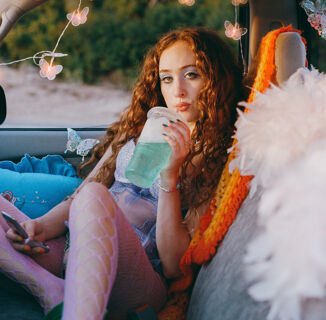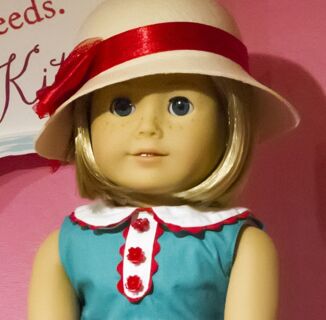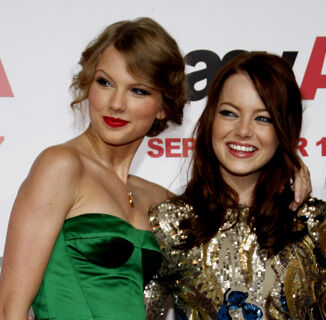The world of Julio Torres’ Problemista is a magical one, a place where even the most mundane activity, like trying to understand FileMaker Pro, can become a fantastic adventure. As writer, director, and actor, Torres brings to life a unique character in Alejandro, a toy designer trying to stay in the United States to secure a job at Hasbro, in spite of the country putting him through trial after trial to secure a work visa.
It’s as much a comedy as it is a bit of a horror film though, one about the human experience—more specifically, the American immigrant experience. It’s as delightful as it is exhausting to watch Alejandro navigate this broken system and his temporary boss Elizabeth, an unhinged former art critic played by Tilda Swinton.
Culture, unfiltered
Twice a week, our newsletter will bring you the pulse of queer culture, from the tastemakers to the groundbreakers.
In Torres’ film, anything can happen: a person can become an unstoppable hydra, a bank teller can shoot you in the head when you overdraft, and a man can win a grant simply for being cute. In the real world, on the day of the film’s release in the United States, we sat down with Julio Torres to discuss his directorial debut, his comic sensibilities, and the beauty and frustration that exists in human connection.
INTO: I want to start by asking about where your comedy is rooted: observational humor but told through objects instead of people themselves. What draws you to sort of making these connections between the human and the inhuman?
JULIO TORRES: I think it’s because I’m very drawn to “the other”. I’m very drawn to very specific people that feel maybe lonely or removed. Objects end up being a vessel to tell those stories. There’s something about an object that’s very ‘by itself’, like fully its own thing; it’s not in the company of anything else. And I tend to write about people that are like that, so maybe that’s it.
Otherness goes hand in hand with queerness, so it makes sense. And even when something has a prescribed meaning, I feel like you’re always trying to flip that on its head. I think back to the shapes from your stand-up or even your Daisy Duck bit, which sort of do and don’t have prescribed ideas. Is your intent in your art to make people think about things that are established in new ways?
Maybe a little bit, but also, I think that we think they’re established ideas, but they’re not really. With Daisy Duck specifically it’s like: what are her personality traits? Who is she? [laughs] She’s a bit of a mystery, I don’t think that anyone could tell you “she’s like this” or “like this” exactly, other than “she’s a duck with a bow on her head.”
Related:
Inside the scripture of Lil Nas X: Where Black, queer & Christian worlds converge
Lil Nas X isn’t the first to push religious boundaries in his music. But as the icon turns 25, colliding responses prompt a closer look.
Just to jump off that, a lot of these ideas and visuals are from our childhoods. What is it about looking back at this imagery that interests you?
You know, I feel like we all have that, or at the very least, we all had that. I think that kids are very drawn to creativity and then something sad happens around adolescence where a lot of people lose it. Like, not everyone makes art, but everyone did color at some point. All these sterile business people did color with crayons; they were artistic at one point.
The idea of imbuing an object with meaning, that’s what playing is. So, I don’t know, I feel like I lost it a bit in adolescence but then claimed it back in adulthood.
Was there anything that sparked that back?
I don’t know – I think I wasn’t a very social person. So I think that solitude brought me back to that point, just like searching for happiness.
During 2020 all I would do is revisit things from my teens.
That’s because you remembered how they made you feel.
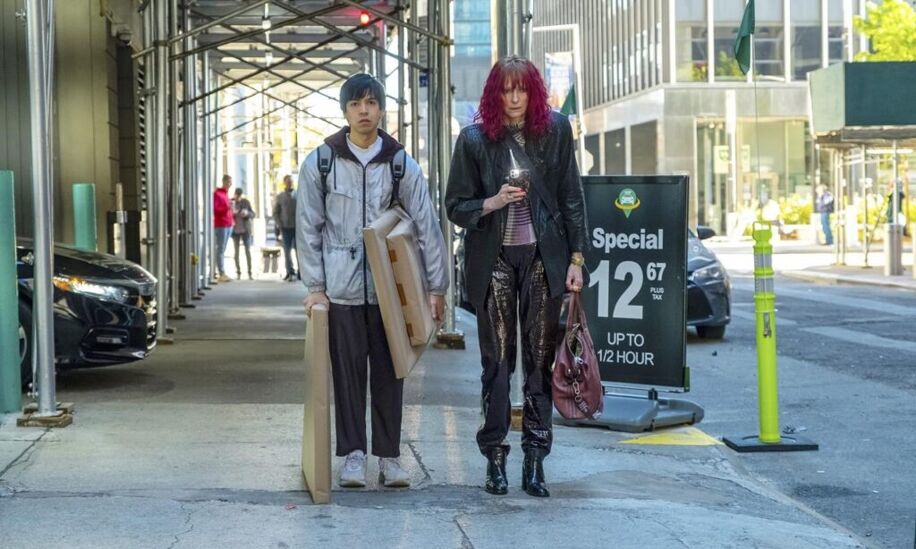
Yeah, and I was wondering about this idea of experiencing comfort in these objects. You subvert that a fair amount in some of the toys that show up in the film. The pop-up snake with a sign that is something of an antithesis to the design of a pop-up snake. When you approach making all these unique objects, is it a distinct subversion of the comfort or enjoyment we found in them as kids, or just trying to give them new ways to mean something to the adults who see them?
In the case of the snake specifically, I see it as a way of almost providing context for the snake. Not excusing it, but explaining the snake and humanizing it, if you will, which is something I’m sort of obsessed by. Even when I feel wronged by someone – let’s say there’s a conflict in passing – I’m angry for a little bit and then I’m just imagining their lives and wondering, “What? Where did we lose each other?” It’s something that I think about a lot.
So much of the connection between Elizabeth and Alejandro is about trying to understand someone else in the face of conflict. Something that stood out is just how much that relationship was a bit of a mirror of him and his mother. By the end of the film, it’s like they’re practically coming home to each other, but I’d love to hear you talk about the scenes between Catalina Saavedra [who plays Alejandro’s mother] and yourself, and how you explored this love that is never-ending in spite of the distance between them. Even just using Whatsapp to communicate with your family that lives elsewhere felt so familiar.
I mean, now every phone company has that Latino pandering ad like, “Es el dia de las madres, mandale un mensajito a tu mami.” And that’s based on – well, it’s exploiting – a reality that’s based on a true observation, right? People who come from different countries are forced to have these relationships through their phones. And part of why it’s so moving is because, at least where I come from, you don’t really leave your home to get married.
Everyone did color at some point. All these sterile business people did color with crayons; they were artistic at one point.
Julio Torres
And even then, it’s questionable.
Yeah, it’s like we don’t really share that American idea of moving away to college and never coming back. Any time someone in the US says, “Oh, so and so has to move back home with their parents,” and it sounds like a tragedy. It sounds like a failure, like something bad has happened. But that is only because of this hyper-competitive environment that says that if you are not achieving the things in the order that they were prescribed, or in the exact way that they were prescribed, that it’s a failure, where, actually, different cultures are longing to be together.
Why would you want to isolate yourself from the people that potentially know you best – barring situations that just suck. To tie it into your past work though, I’m always thinking about “Wells for Boys” and that too is grounded in the mother and queer child relationship. What is it about that relationship dynamic that you’re drawn to?
It’s interesting, I’ve never quite articulated it in that way, but you’re right – I think of the mother as a protector. And mother as, not just a caretaker but as a provider of strength. That’s at least my experience with my mother. She’s not always a cheerleader, but more of a collaborator.
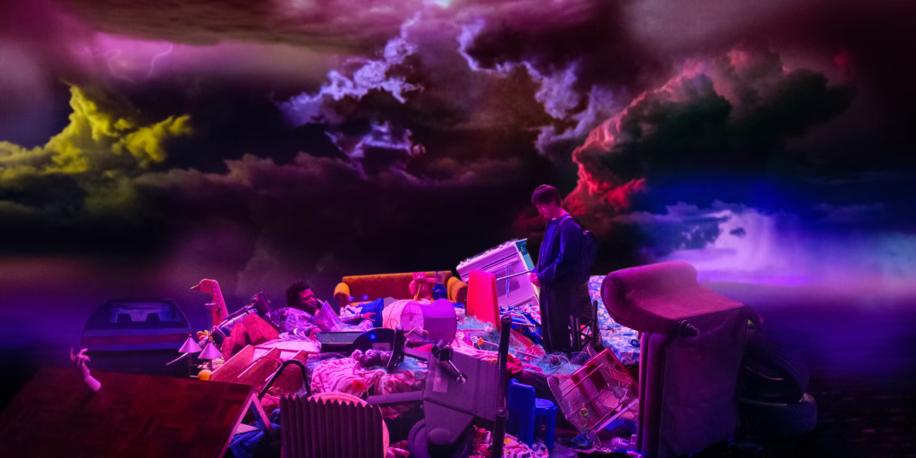
That shows in the film with these monuments Alejandro’s mother creates and how she can’t function if he can’t function, which is beautifully symbiotic. Did that also stretch into how you portrayed Elizabeth and Alejandro to some extent?
They’ve completely formed this terribly codependent relationship. One’s frozen and she still wants the other one. In many ways, it’s more of an exploration of falling in love with someone who’s not good for you, which I think Alejandro does. I feel like any therapist would be like “walk away now”, but like no. And it’s not that I’m prescribing that to anyone, but it’s just something that we do sometimes.
It’s almost the most meaningful relationship in the movie because everything else is just so transactional. Were you trying to contrast the intimacy of a toxic relationship with the rest of the world?
Yeah! The humanity is removed from so many people in the movie because they’re just trying to survive. And it’s almost like they’re walking and these two are just tangled together because I think they’re both desperately trying to be seen and understood.
You balance the horrendous bureaucracy of the American immigrant experience with how charming it can be to be alive. How do you try to toe that line between the magical realism and the harsh reality of life?
It’s not a calculated design, that just so happens to be who I am as a person. I hold criticism and joy hand in hand. It’s like New York, right? I’m not afraid of criticizing it, but I do love it.
And I think, for a while, I thought I was going to be the kind of creator who was only full of whimsy and wasn’t really grounded in any truth and wasn’t interested in any form of political statement. But then I felt, on the other end, that there was this push for any writer-performer who is an “other” to push that to the forefront. And it wasn’t until I realized that both answers were wrong and right at the same time – they were incomplete – that I really got to the heart and tone of the movie.
That’s been a throughline in your work. Just going back to “Wells For Boys”, that’s whimsical and delightful, but it’s also political without necessarily yelling it from the rooftop.
Yeah, it’s not handholding.
And the way you present your art, or your comedy even, is so casual while also overflowing with ideas and uniqueness. At the Problemista comedy tour, I was taken aback by how off-the-cuff it felt while also feeling recognizably and brilliantly scripted. So this is a long winded way of asking if you feel like your work as a writer, as a filmmaker, and as a performer are all inextricably linked, or if you dive into different modes of thinking when creating?
I don’t really put on different hats for different mediums. I think that I have an idea and then that goes into whatever vessel can hold that idea. I don’t see them as different and I think that’s maybe even why the movie has a narrator [played by Isabella Rossellini]; it’s an approximation of me narrating. ♦
Help make sure LGBTQ+ stories are being told...
We can't rely on mainstream media to tell our stories. That's why we don't lock our articles behind a paywall. Will you support our mission with a contribution today?
Cancel anytime · Proudly LGBTQ+ owned and operated
Read More in Culture
The Latest on INTO
Subscribe to get a twice-weekly dose of queer news, updates, and insights from the INTO team.
in Your Inbox



